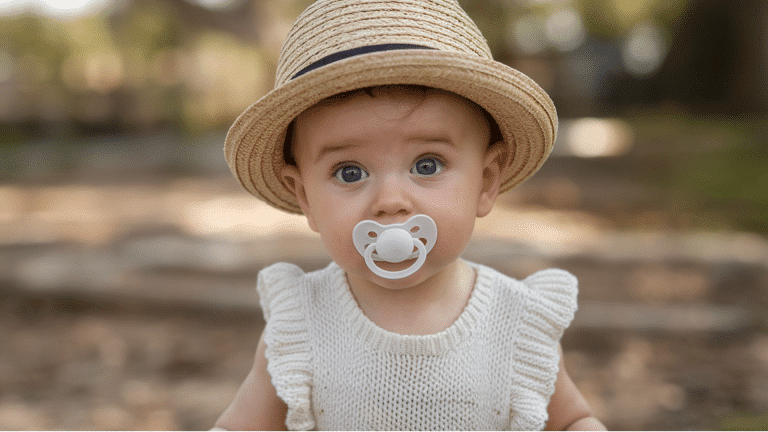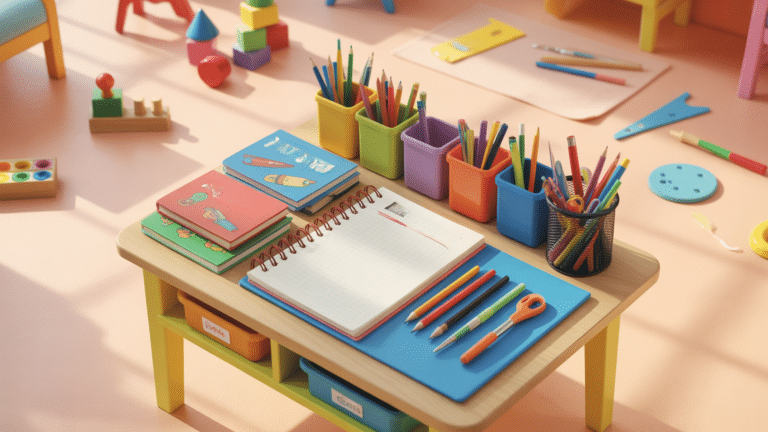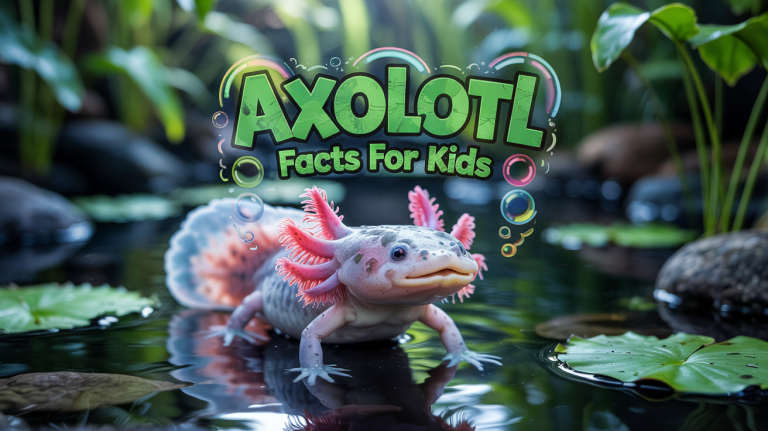Babies grow fast, but not just in size. Their minds, senses, and skills change too, sometimes in ways that feel sudden or confusing.
If your baby has ever seemed extra fussy out of nowhere, you might’ve been in the middle of a developmental leap.
In this guide, I’ll break down:
- The science that explains these changes in your baby’s brain
- Clear signs to help you spot when a leap is coming
- Simple ways to help your baby (and yourself) during these periods
You’re not alone in wondering why your baby sleeps less, cries more, or clings tighter. These leaps can be tough, but they’re also a sign your child is learning something big.
This parent-friendly guide gives you exactly what you need to know when you need it most.
Developmental Leaps: What They Are and Why They Matter
I remember the first time I noticed my baby suddenly acting different, more clingy, harder to settle, and crying more for no clear reason.
It felt confusing, but later I learned it was part of something called a developmental leap.
These are short, intense periods when your baby’s brain goes through big changes. They don’t just wake up one day with new skills, it takes effort.
During these leaps, your baby’s world feels different, and that can throw off their mood and sleep. These leaps are also tied to huge changes in movement and coordination. Babies build early hand and body control long before the big milestones appear, and you can see many of these foundations in early motor skill development for babies.
But here’s the good part: after the tough phase, they often do something new like babbling more, grabbing toys, or sitting up.
These leaps are signs of healthy growth, even if they feel hard in the moment. You’re not doing anything wrong if your baby seems fussy, it’s all part of their progress.
Knowing what’s going on helps you be more patient and confident through it.
Key Signs Your Child Is Going Through a Developmental Leap
These leaps are part of normal development, and they usually come with a handful of signs that you can spot if you know what to look for.
Understanding these helps you respond with patience instead of worry.
1. More Clingy than Usual
My baby didn’t want me to go anywhere, even just walking into the next room caused tears. If your child suddenly needs you more than before, it could be a leap.
This clinginess isn’t about spoiling, it’s about needing comfort during a confusing time.
They’re processing new sights, sounds, and movements, which can be overwhelming. They might refuse to be held by others or cry the moment you set them down.
I used to think something was wrong, but once I realized it was temporary, I leaned into it and gave the extra cuddles.
2. Mood Swings or Fussiness
One minute my baby was smiling, and the next, she was wailing. These mood swings often come out of nowhere and feel hard to manage.
But they’re common during a leap. Your child might cry more, get frustrated easily, or seem irritable without a clear reason.
It’s not about being spoiled or grumpy, it’s how they cope with big brain changes.
I found that quiet time, soft voices, and sticking to routines helped a lot. You’re not doing anything wrong if your happy baby seems off. It’s all part of the process.
3. Changes in Sleep
Sleep can take a hit when a leap is happening. You might see shorter naps, more night wakings, or difficulty settling down. It’s frustrating, but your baby’s brain is working overtime.
They may be dreaming more or waking because of new awareness. I tried to stay consistent with bedtime routines and gave extra comfort when needed. After the leap passed, sleep improved again.
So if you’re in a rough patch, know that rest will return soon.
4. Less Interest in Eating
Appetite changes are common when babies are busy learning. They might nurse less, skip a bottle, or only want snacks. Their energy is focused on development instead of eating.
I kept offering food and trusted her to eat when she was ready. If your baby suddenly turns away from meals, it might just be part of a leap.
Keep an eye on hydration and don’t force it, they’ll bounce back.
5. Sudden New Skills
After a rough few days, I watched my baby sit up on her own for the first time.
That’s the amazing part of leaps, they’re often followed by a big, exciting milestone. Your child might start crawling, grabbing with more control, or babbling new sounds.
You may not see progress right away, but once the leap ends, the new skill usually shows up. It’s like their brain was getting ready all along.
Celebrate those wins, they’re proof that all the fussiness had a purpose.
6. Easily Overwhelmed
During a leap, my baby couldn’t handle the usual noise from our family dinners.
She’d cry more in busy places or when around new people. If your child suddenly gets upset in situations they were fine with before, it could be because their senses are on high alert.
Everything can feel too loud, too fast, or too much. I started taking things slower, less stimulation, shorter outings, and more calm time at home.
That helped her settle. It’s not forever. Once the leap passes, you’ll likely see them return to being more adaptable.
How Developmental Leaps Help Build Important Skills?
When I first heard about developmental leaps, I didn’t realize how much they shape a child’s abilities.
These leaps aren’t just tough phases, they actually help your baby grow in ways you can see and feel. Below are some of the main skills that start to build during these leaps.
1. Understanding Cause and Effect
I noticed my baby pressing a button on a toy just to see what would happen. That’s cause and effect in action. During a leap, your child starts to understand that their actions lead to results.
This is a big step toward learning how things work. It helps with problem-solving and even with everyday stuff like dropping a spoon and watching you pick it up.
2. Better Motor Skills
Leaps can lead to sudden changes in how your baby moves. You might see them rolling, crawling, or grabbing things more accurately. These new movements aren’t random, they come from focused brain growth.
I saw my baby’s hand control get better overnight. These skills are important for everything from playing with toys to feeding themselves later on.
3. Stronger Social Awareness
I started noticing my baby watching faces more closely or reacting to my mood. That’s a sign of growing social awareness. During leaps, babies begin to notice how others act and respond.
They start to recognize emotions and learn how to interact. This helps with bonding, sharing, and communication down the road.
4. Sharper Senses and Focus
Sometimes my baby would just stare at a ceiling fan like it was the most interesting thing in the world. That’s part of their sensory and focus development.
A leap can sharpen their ability to see, hear, and pay attention. You might see them tracking objects better or turning toward new sounds.
5. Early Problem-Solving
I remember watching my baby try different ways to reach a toy. That showed me she was learning how to solve simple problems.
Leaps support this kind of thinking. Your baby starts to figure out basic things, like how to get something they want or how to stack blocks. These early efforts help build confidence and thinking skills.
6. Language and Communication
During some leaps, I heard my baby babble more or make new sounds. That’s how language starts to develop.
They may not say words yet, but they’re practicing. A leap can boost their ability to understand tone, rhythm, and even simple words. I talked to my baby a lot during these times, and over time, she talked back.
How Long Do Developmental Leaps Typically Last?
In my experience, most developmental leaps last around one to two weeks, but some can go up to three weeks depending on your baby.
That might not sound long, but when you’re dealing with fussiness, sleep changes, and constant clinginess, it can feel like forever. I remember thinking something was wrong the first time it happened.
But then I realized it followed a pattern, and sure enough, it passed.
Each leap follows a general timeline based on your baby’s age, but babies grow at their own pace. Some leap early, some a little later.
You might notice a leap starts gradually, then hits a rough patch in the middle, and slowly fades out.
For me, the middle part was always the hardest, when sleep was off and nothing seemed to calm my baby. Once the leap was over, she usually had a new skill, like sitting up or making new sounds.
Knowing it has a start and end can really help you stay grounded, even when things feel unpredictable.
And if a leap seems to drag on too long or your baby seems really uncomfortable, trust your instincts and reach out to your pediatrician.
Smart Strategies to Navigate Developmental Leaps with Ease
Going through a developmental leap with your baby can feel like walking through fog. I’ve been there, wondering what changed overnight and how to get through the day without feeling overwhelmed.
The good news is, with a few simple strategies, you can support your baby and take care of yourself too.
- Stick to familiar routines: Keeping your usual schedule will help your baby feel secure, even during fussy days. And keeping naps, meals, and bedtime around the same time gives them something to count on.
- Offer extra comfort and closeness: During a leap, your baby might want to be held more. I leaned into that instead of resisting it. Use a carrier, cuddle more, or just sit together.
- Don’t stress over sleep changes: Leaps often mess with sleep. I used to panic when naps got shorter or bedtime dragged on. Keep your routine, stay calm, and offer comfort without building new habits you’ll have to break later.
- Watch for signs of new skills: Your baby might be fussier, but also trying something new, rolling, grabbing, or babbling. Focusing on growth can help shift your mindset and make the tough parts feel more worth it.
- Take care of yourself too: Some days I just needed a break, even five minutes alone in the bathroom helped. Ask for help when you need it. Eat, rest, and remind yourself: you’re doing a great job, even when it doesn’t feel like it.
- Trust your instincts: You know your baby best. If something doesn’t feel right, it’s okay to call your pediatrician. It’s better to ask than to worry in silence. Most of the time, it’s just a leap, but it’s okay to check.
Conclusion
Watching your child grow can feel like a mix of joy, confusion, and endless questions.
In this guide, you found out what these leaps are, when they often happen, and how they affect your child’s mood, sleep, and behavior.
You’ve also learned how to spot signs of a leap and ways to support your child during each phase.
Remember:
- Every child grows at their own pace.
- Leaps can bring tough days, but they don’t last forever.
- Your support makes a big difference.
Staying patient, observant, and calm during these leaps can help both you and your child adjust.
Keep learning, keep loving, and trust that you’re doing your best, even when things feel unpredictable. Growth is messy, but it’s also beautiful.










